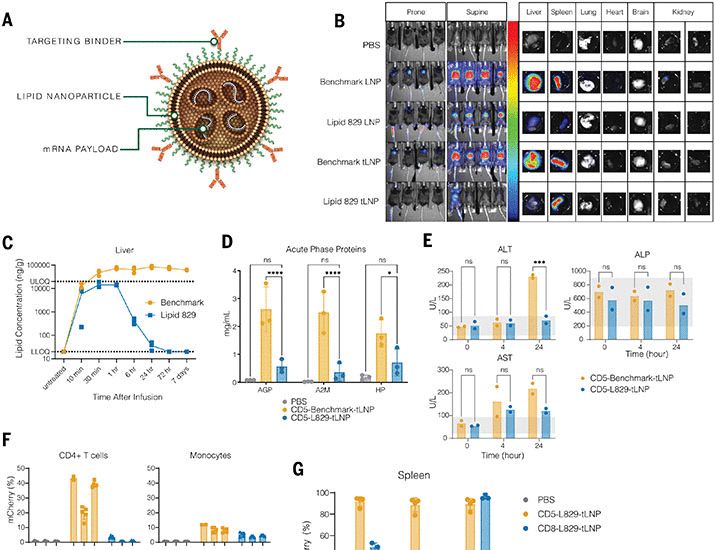Fly high, metal grandpa.
25.07.2025 02:17 — 👍 42 🔁 9 💬 3 📌 0
This is a cumulative maximum intensity projection movie of the endoplasmic reticulum labeled with the membrane marker mEmerald-Sec61B.
11.06.2025 00:55 — 👍 152 🔁 21 💬 9 📌 3
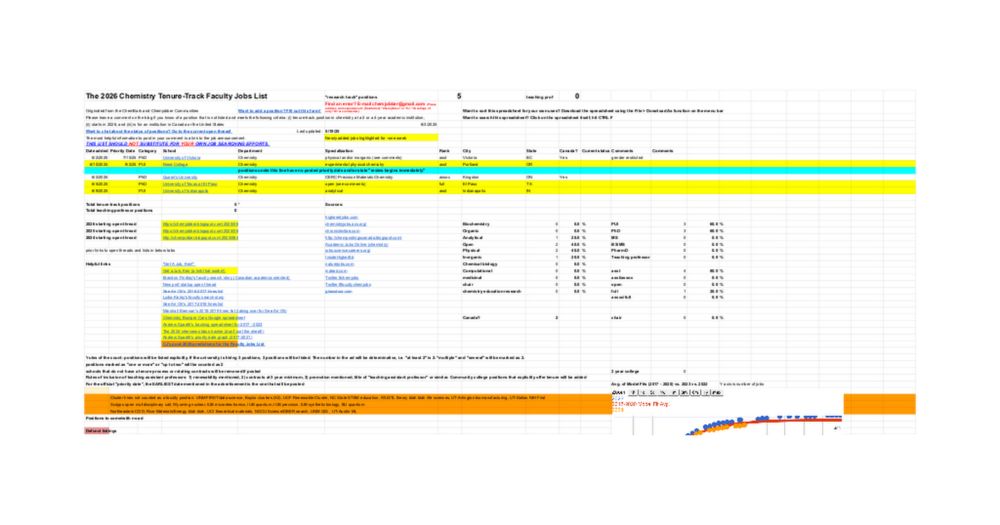
The 2026 Chemistry Faculty Jobs List
The 2026 Chemistry Faculty Jobs List has 4 tenure-track positions: docs.google.com/spreadsheets... #facultychemjobs #chemsky #chemjobs
10.06.2025 15:14 — 👍 24 🔁 11 💬 4 📌 3

We set out to quantify U.S. academic contributions to medicines. The results stunned even us
From 2020 to 2024, universities contributed patents underpinning 50% of FDA-approved drugs. 87% of those academic breakthroughs came from American institutions.
“universities contributed patents underpinning 50% of FDA-approved drugs…
NIH-funded basic science has contributed to the development of more than 90% of new medicines, vaccines, and devices…
75% of scientists in America were considering leaving the country.”
www.statnews.com/2025/06/06/u...
07.06.2025 17:21 — 👍 223 🔁 117 💬 3 📌 3
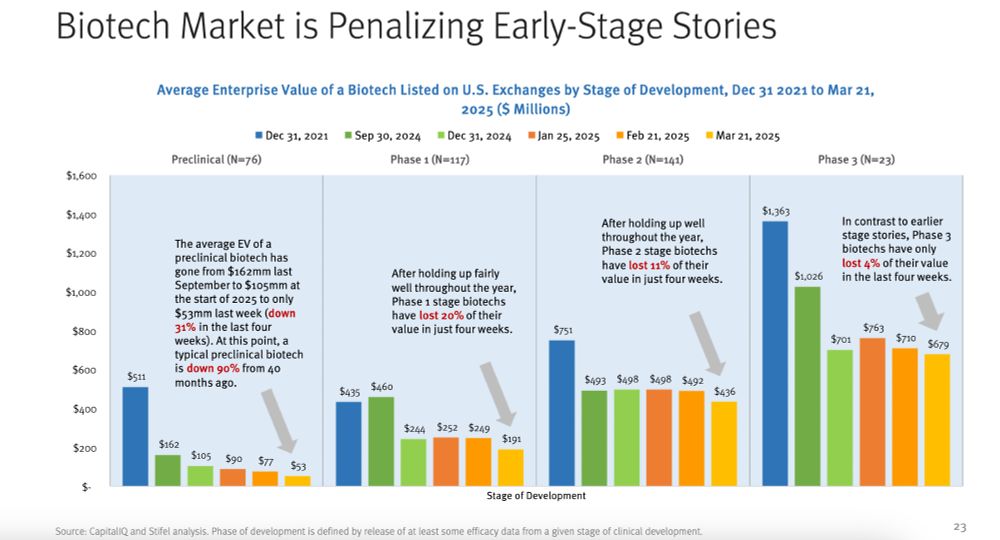
God, it's brutal out here
06.04.2025 20:06 — 👍 1 🔁 1 💬 0 📌 0
In a new Science study, cryo–electron tomography captures the in-cell architecture of the mitochondrial respiratory chain, illuminating how the coordinated action of molecular machines drives life’s fundamental energy conversion.
Learn more in this week's issue: scim.ag/3FA3Ygq
20.03.2025 18:05 — 👍 464 🔁 143 💬 15 📌 35
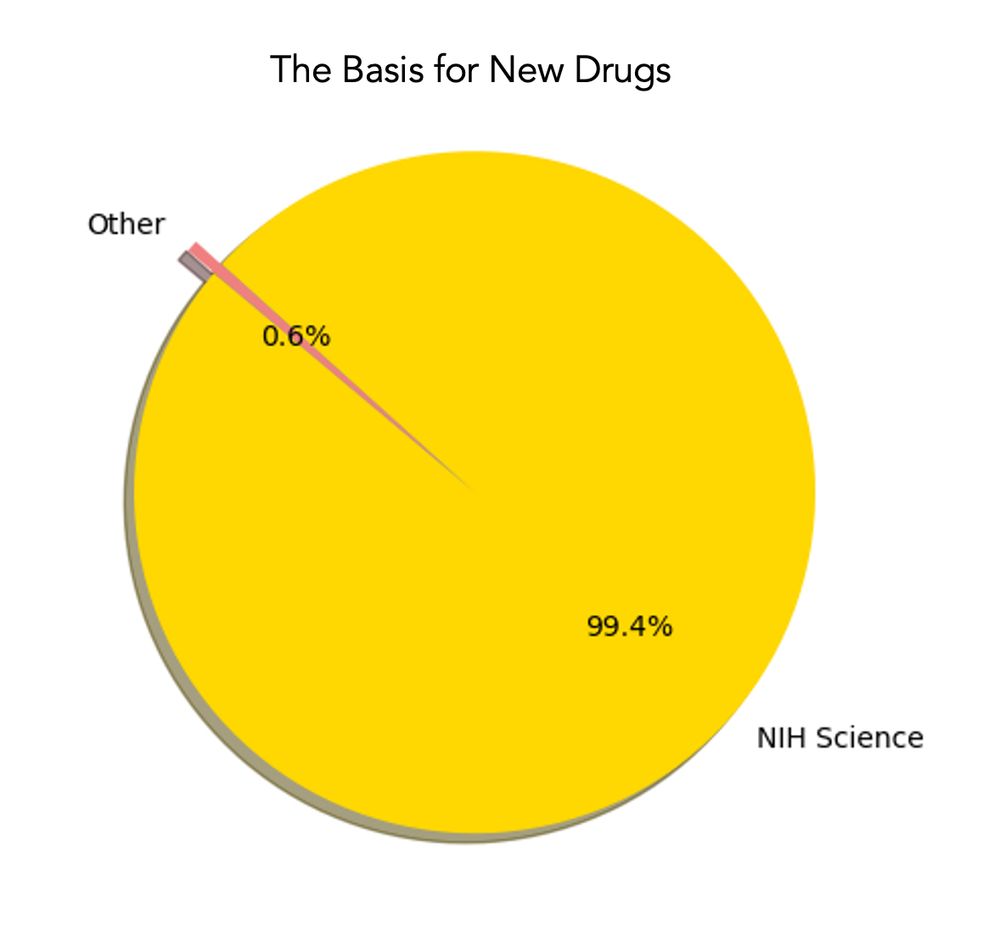
graph of NIH basisfor new drugs
A pie graph worth keeping in mind as the NIH budget plummets jamanetwork.com/journals/jam... for 356 new FDA drugs approved
23.03.2025 16:17 — 👍 4040 🔁 1652 💬 61 📌 85

Pfizer, Arvinas post mixed breast cancer survival results in first phase 3 test for a PROTAC degrader
Pfizer and Arvinas’ estrogen receptor (ER) degrader has
Summary: 1st Ph3 readout for a #PROTAC; likely path-to-approval in metastatic breast cancer patients w/ ESR1 mutations after having received endocrine therapy & CDK4/6 inhibitors; in line with previous clinical data; stock brokers don‘t understand Ph1/2 data. www.fiercebiotech.com/biotech/pfiz...
12.03.2025 06:44 — 👍 14 🔁 2 💬 0 📌 0

There’s a frequent perception among recent entrants to drug discovery world that if we could just find drug candidates faster, this will be a useful accelerant to the overall process. The issue is: this thinking is mostly (but not entirely) incorrect. 🧵 1/
16.01.2024 18:31 — 👍 36 🔁 13 💬 2 📌 5
As an undergraduate.
22.01.2025 02:06 — 👍 0 🔁 0 💬 0 📌 0
Hello Justin! I worked with Dave from 1987 to 1990.
22.01.2025 02:05 — 👍 1 🔁 0 💬 0 📌 0

Members of the Peterson lab and the Drug Discovery Shared Resource High Throughput Screening lab at The Ohio State University celebrating the holidays in December 2024.
Happy Holidays from the Peterson lab and the OSUCCC Drug Discovery Shared Resource HTS lab at Ohio State!
@osucccjames.bsky.social
15.12.2024 15:33 — 👍 12 🔁 0 💬 0 📌 0

Celebrating Xiaojun Hu's successful defense of his PhD in Pharmaceutical Sciences (Medicinal Chemistry specialization)
Super proud of Xiaojun Hu for a successful defense of his PhD in Pharmaceutical Chemistry (Medicinal Chemistry specialization)! Xiaojun was the first Ohio State graduate student to join my group after I moved here in 2019.
11.12.2024 16:40 — 👍 8 🔁 0 💬 0 📌 0
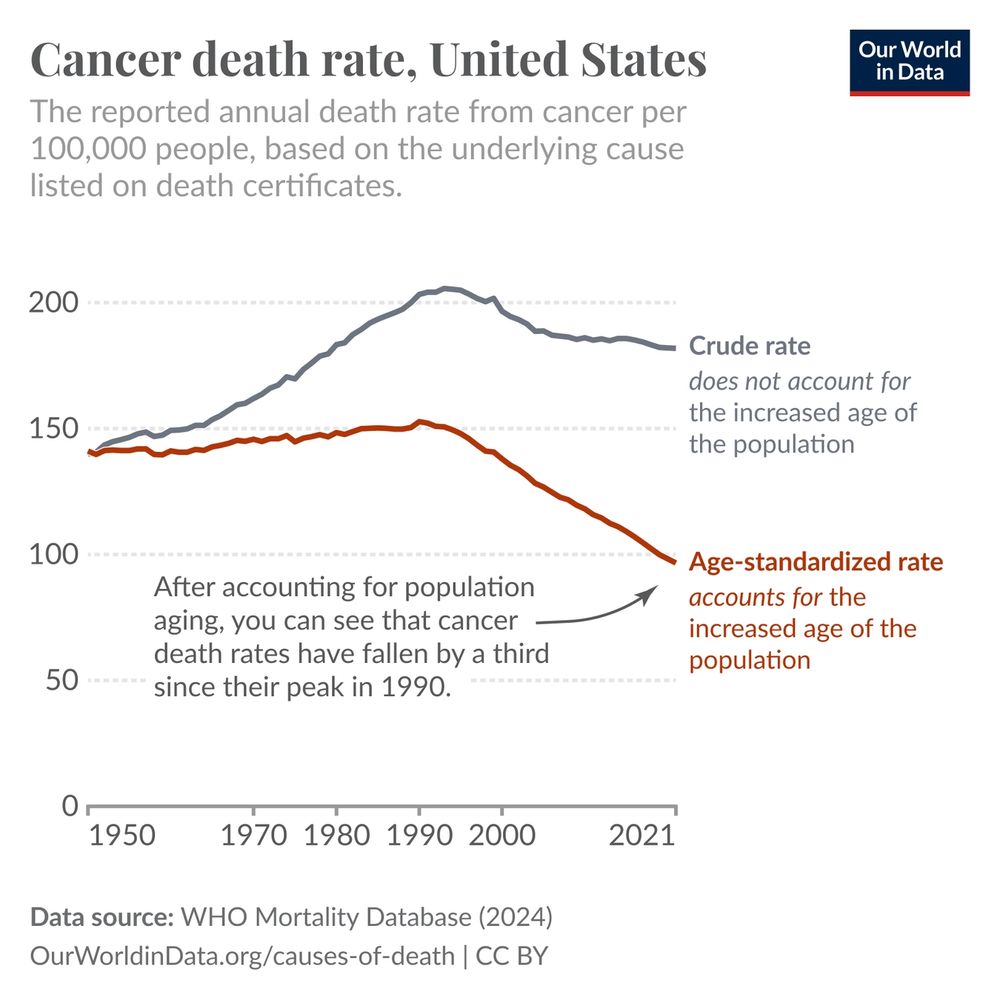
How has the risk of dying from cancer changed in the United States?
To understand this, we can look at national cancer death rates in the United States.
The gray line shows the crude rate, which is the rate of deaths from cancer per 100,000 people. It has risen between 1950 and 1990 and has fallen slightly since then.
However, cancer death rates rise sharply with age, and the age of the US population has increased since 1950, so we would expect cancer death rates to rise for that reason alone.
What if we adjust for the increased age of the US population?
The red line, the age-standardized rate, shows this. It shows the cancer death rate if the age structure of the US population was held constant throughout.
This shows a slight rise until 1990 and then a significant decline; rates have fallen by one-third.
This means Americans are now one-third less likely to die from cancer at the same ages as Americans in 1990.
This comes from several factors: better screening and earlier diagnosis, medical advances in cancer treatments, and public health efforts to reduce risk factors like smoking and exposure to carcinogens.
Americans are now one-third less likely to die from cancer at the same ages as Americans in 1990
09.12.2024 10:02 — 👍 1161 🔁 256 💬 32 📌 37
I feel your pain, Jordan, but that thread was really funny. It reminds me of a trip almost 20 years ago when my daughters were one and four, and our four-year-old threw up all over my wife on an airplane.
09.12.2024 02:02 — 👍 2 🔁 0 💬 2 📌 0

Fluorescent Tags Are Basically Never Silent
Fluorescently labeled proteins are essential to research. But we should never forget how messed-up their behavior can be. An example from condensates:
02.12.2024 18:56 — 👍 135 🔁 38 💬 9 📌 8

Inside your body, aging unfolds at remarkably different rates
New research shows aging is not a uniform process. Parts of our bodies start aging earlier than others, right down to our organs and cells.
“Scientists..found that those who often smoked, drank or ate processed meats were prone to accelerated organ aging, while anyone who regularly exercised or ate oily fish was far more likely to have youthful organs.” www.washingtonpost.com/wellness/202...
30.11.2024 16:15 — 👍 139 🔁 27 💬 14 📌 0

Sky Follower Bridge - Chrome Web Store
Instantly find and follow the same users from your Twitter follows on Bluesky.
If you have a PC or Mac, with a Chrome browser, use Sky Follower Bridge to find the followers that you had on Twitter over here.
It’s very easy to use !
chromewebstore.google.com/detail/sky-f...
25.11.2024 17:48 — 👍 14 🔁 8 💬 0 📌 1
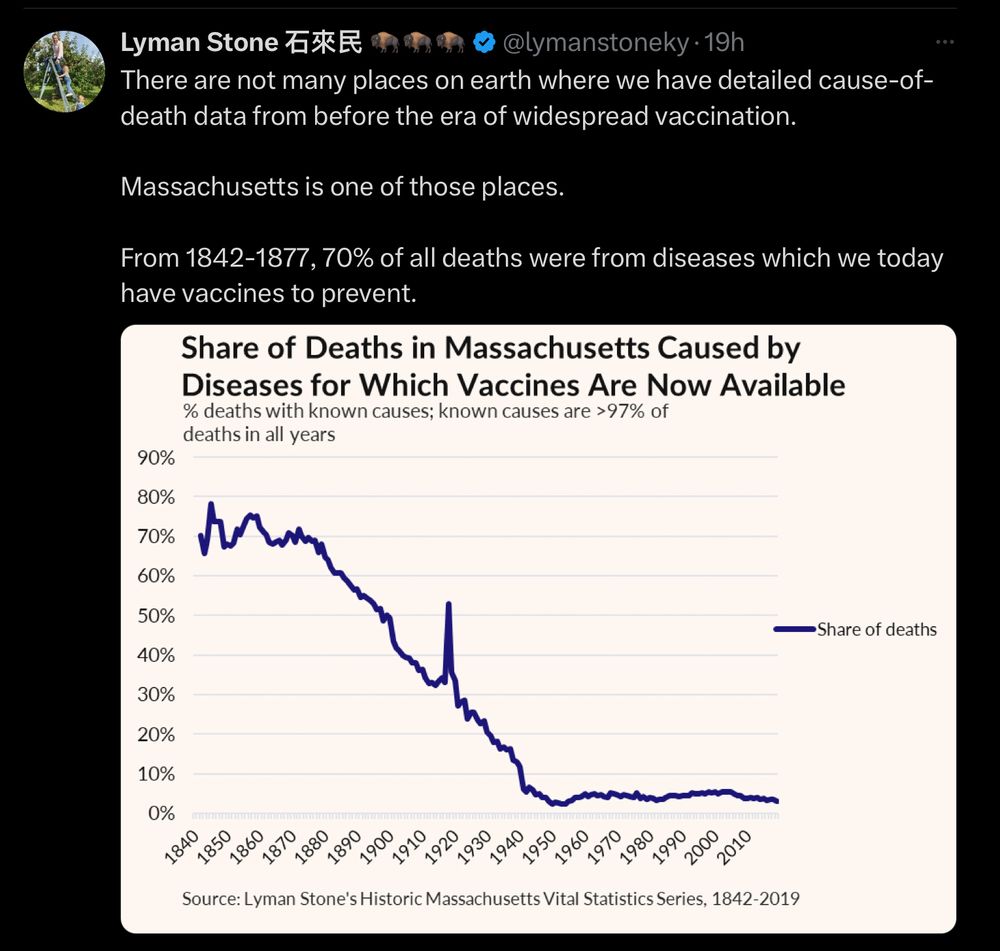
Post showing precipitous decline of share of deaths in Massachusetts from diseases for which vaccines are now available, from 70% in 1840 to low digits % by 1950-60 where it is stayed.
Caption: There are not many places on earth where we have detailed cause-of-death data from before the era of widespread vaccination.
Massachusetts is one of those places.
From 1842-1877, 70% of all deaths were from diseases which we today have vaccines to prevent.
Anyone who is anti-vax is pro-death. Period. The science and data do not lie. And they don’t care about your podcast.
24.11.2024 22:52 — 👍 26429 🔁 5725 💬 555 📌 198
Thanks, Darci for being such a wonderful host. I had a great time at UC Irvine visiting with your faculty and graduate students in the Department of Pharmaceutical Sciences and the Department of Chemistry.
19.11.2024 13:39 — 👍 1 🔁 0 💬 0 📌 0

Cartoon of man on plane with hand raised, saying “These smug pilots have lost touch with regular passengers like us. Who thinks I should fly the plane?”
15.11.2024 11:16 — 👍 193 🔁 34 💬 1 📌 0
In grad school in the early 90s, I made the poor decision to try to use a crescent wrench to remove the cap from a 50 mL bottle of BBr3 in a fume hood. I spilled the bottle in the process and had to evacuate the lab as it filled with white vapors of HBr when the hood couldn’t clear it fast enough.
14.11.2024 12:25 — 👍 2 🔁 0 💬 0 📌 0
Types of MedChem papers
#ChemSky
12.11.2024 01:41 — 👍 28 🔁 2 💬 2 📌 1

a close up of a hamster 's face and paws
ALT: a close up of a hamster 's face and paws
Skeetorial time! We need to chat about pharmacokinetics & pubs. If you plan to publish in vivo PD/efficacy studies, the minimum credible accompanying PK package is an IV leg + an IP/PO leg if that's your eventual route. In the same species, preferably at the planned efficacy dose. 1/
09.11.2024 17:53 — 👍 16 🔁 5 💬 2 📌 0
Dad, husband, President, citizen. barackobama.com
#nafo
#osint
#hedgehog
Just a hedgehog that follows the war in Ukraine. I post stuff I find interesting. I sometimes write newsletter about the war, I am bad at keeping up with it.
Very little fluff, almost exclusively war stuff
Award-winning home tank for all things zebrafish! Learn more about us and our Slack tankspace at our website: linktr.ee/zebrafishrock
Sam Thielman | Graphic novels at NYT Book Review, seen NYer, Flaming Hydra, foreverwars.ghost.io | he/him | DC COMICS: THE STORY OF A UNIVERSE w/Sean Howe forthcoming | “The heart can’t keep double accounts, and its books must eventually be balanced.”
Bioinformatics, protein modeling, cryoEM, drug screening, function prediction. Daisuke Kihara, professor of Biol/CS, Purdue U. https://kiharalab.org/ YouTube: http://alturl.com/gxvah
Surgeon, Writer ("Being Mortal," "Checklist Manifesto"), and formerly led Global Health @USAID.
That actress and game show host who made Cocaine Bear. I talk too much, and I’m about to say something in my profile pic.
Exploring the mysteries of how life starts - from fertilization to dormancy; combining in vivo & in vitro (fish, mouse, cell culture, biochem); privileged to work with an amazing team @IMP!
https://paulilab.org/
https://www.imp.ac.at/groups/andrea-pauli/
Postdoc in the Pauli Group at IMP Vienna studying fertilization | #scicomm | #mentoring | #scienceandfaith | #DiversityandInclusion | Salvadoran scientist 🇸🇻
The Virtual ChemBioTalks are a series of free annual events in the field of #ChemBio. Free registration required at: cvent.me/G1geWW
Homepage: https://www.universiteitleiden.nl/en/science/led3/chembiotalks
CryoEM, membrane proteins and whatnot
Museum exec, MRC, visiting prof at the Dunn School, Oxford, and UCL Chemistry. Ex Editor of New Scientist, and Science Editor of the Telegraph. Co-author #VirtualYou and more books. Neutron bouncer
Old process chemist - I make drugs by the metric fuckton
Ready to make the free pharmaceuticals that save lives in the glorious corporation free future
Follow all scientists
Not a Dem or a Repub, but a secret 3rd thing
Ask me about drugs or chemistry
Chemist and Senior Scientist @ Berkeley Lab. Entrepreneur @ Sepion Technologies & Cyklos Materials. Dog dad to Abraham, the Frenchie.
ER doc, public health professional, researcher, and former chief medical officer at the CDC. Working to improve health in communities while figuring out what is next for me
Decoding how the gut thinks 🦠🪱🧠💪
Neuroscientist with interests in
#EnergyMetabolism #EntericNeurons #Fats
@crick.ac.uk @institutducerveau.bsky.social
Executive Director, Blue Missouri. Grassroots organizer. Writer. Former State House nominee. Rural mom fighting for rural schools. Dirt Road Democrat.
Married, love cats, hockey, like 70s and 80s rock, Democrat, Pro Choice, LGBTQ ally 🇺🇸🏳️🌈🐈🐱.
🚫MAGAts 🚫DMs 🚫crypto🚫spammers
#Resist
#TrumpNotMyPresident
TV writer. Author of the novels THE PAYBACK and THE SURVIVALISTS. Deadly with a butter knife.
Order THE PAYBACK here 👉🏾 https://kashanacauley.com
"A scholar and a hater" - The Guardian
◦ historian of nazis & usa @ Yale
◦ fellow, RITM & @yalewhc
◦ author, THE HOMELAND (2026)
◦ host, This Guy Sucked - the world’s meanest history pod
opinions mine.
https://www.ceaubin.com
https://thisguysucked.com
